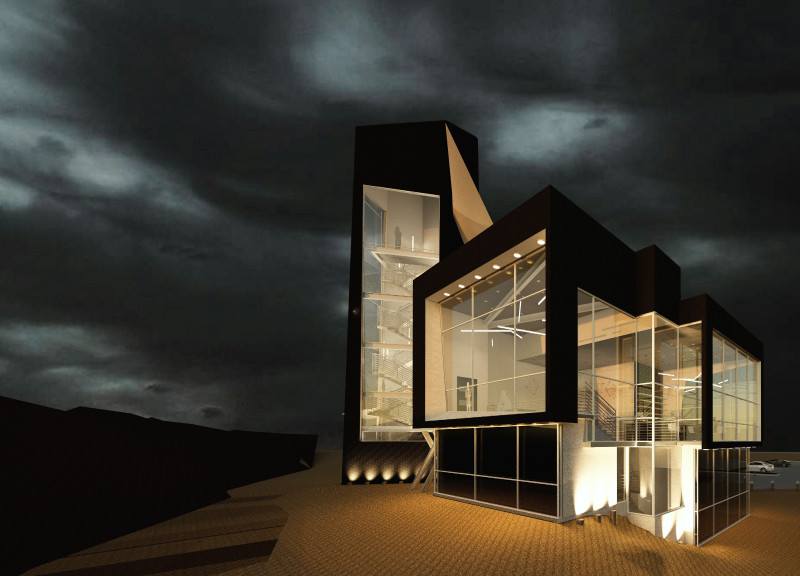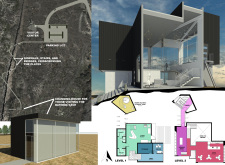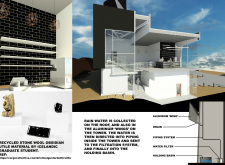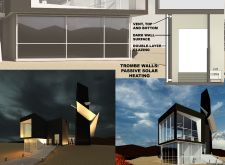5 key facts about this project
This architectural project represents a visitor center designed to harmonize with its natural environment while prioritizing sustainability and functionality. The structure utilizes innovative materials and a thoughtfully organized spatial arrangement to enhance the visitor experience. As a focal point, the building serves as both an informative facility and a refuge, allowing guests to appreciate their surroundings.
The architectural design is characterized by a dynamic massing that disrupts conventional forms typically found in similar structures. The use of recycled materials, such as recycled stone wool, demonstrates an important commitment to environmental responsibility. The building's facade features an interplay of textures and colors that reflect the natural context, ensuring a cohesive and visually appealing exterior.
Sustainability is a key aspect of this project. Passive solar design elements, such as Trombe walls, optimize energy efficiency by utilizing natural sunlight for heating. The inclusion of rainwater harvesting systems further enhances the building's ecological footprint, allowing for self-sufficiency in water management while minimizing environmental impact.
Unique to this project are its expansive glass windows which serve multiple purposes: they facilitate natural light penetration, create visual connections with the landscape, and promote the integration of indoor and outdoor spaces. The interior layout is meticulously planned to support intuitive circulation, accommodating both public and private areas effectively.
The visitor center comprises specific functional zones, including a lobby, café, and viewing deck, allowing visitors to engage meaningfully with the surrounding environment. The inclusion of shared spaces fosters community interaction and encourages a collective experience among guests.
In summary, this architectural project distinguishes itself through its commitment to sustainability, innovative use of materials, and emphasis on creating a seamless connection between the built environment and its natural surroundings. To gain a comprehensive understanding of the project's architectural plans, sections, designs, and ideas, readers are encouraged to explore the project presentation for further details.


























